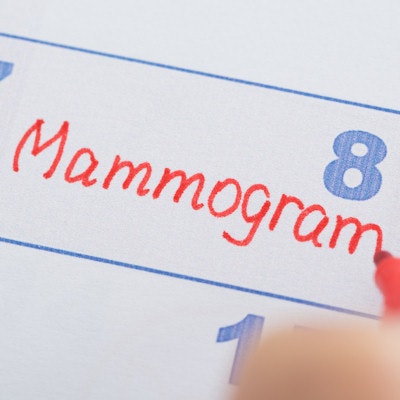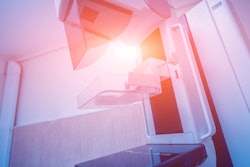
The use of online self-scheduling for screening mammography has increased by over 30 percentage points over the last eight years, according to findings published August 25 in the Journal of the American College of Radiology.
A team led by Emily Ambinder, MD, from Johns Hopkins Medicine in Baltimore also found that younger women, non-Black women, English-speaking women, and women from non-disadvantaged zip codes were more likely to self-schedule. However, they noted that online self-scheduling "remains underutilized."
"Self-scheduling through online patient portals has many potential benefits for both patients and healthcare systems," Ambinder and co-authors wrote.
Online self-scheduling offers a convenient way for patients to schedule mammograms on their own time.
From the patient side, this service allows for women to have control in scheduling their own appointments at any time from anywhere, which could add to patient satisfaction and convenience. For radiologists, this service helps streamline the appointment scheduling process, which may lead to cost savings by decreasing phone and administrative expenses.
The few studies that outline its use show low utilization, Ambinder et al wrote. To explore why, they assessed Johns Hopkins' initial experience offering self-scheduling for screening mammography and explored which patient factors seemed to be tied to using this service.
The team included data collected between January 2015 and December 2022 for 250,369 screening mammograms performed in 74,860 unique patients with an average age of 59.
The group found that of the total, 36,200 (14.5%) were self-scheduled through the online service, and self-scheduling increased each year during the study period, from 3.7% in 2015 to 36.9% in 2022. Odds ratios (OR) also significantly increased for self-scheduling use in the period, from 1.6 in 2016 to 23.2 in 2022.
The researchers identified several predictors that were significant for univariate and multivariate logistic regression. For multivariate analysis, they included variables such as the year the exam was performed, patient age, race and ethnicity, language, and area deprivation index.
| Significant predictors of online self-scheduling use (odds ratio, with 1 as reference) | ||
| Predictors | Univariate analysis | Multivariate analysis |
| Age younger than 50 years | 3.8 | 5.4 |
| White | 1.1 | 1.5 |
| Asian | 1.4 | 1.3 |
| English-speaking | 1.7 | 2 |
| Area deprivation index 40-59 | 1.4 | 1.3 |
Only 7% of patients ages 70 and older used self-scheduling during the study period, Ambinder and colleagues noted, suggesting that using carefully chosen staff resources could help support older women as they continue to schedule mammograms over the telephone.
"If we want to increase [self-scheduling] utilization among older patients, targeted education may be needed," they wrote.
The authors added that additional language options should be included in online patient portal systems and that all patients should have equal access to appointments regardless of socioeconomic level. This includes continuing to offer phone scheduling, as well as making self-scheduling sites easy to navigate for users.
The study can be found in its entirety here.




















